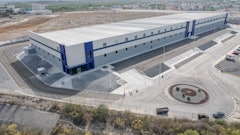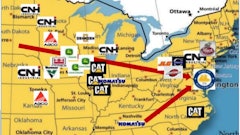Construction materials costs dropped in November, aided by a plunge in diesel prices along with smaller decreases in a variety of other inputs, according to an analysis of new federal figures released by the Associated General Contractors of America (AGC of America). Association officials noted that some of the price declines may be related to the fact that the threat of the fiscal cliff is already having an impact on demand for construction and related materials.
“The recent price decreases are very welcome after years of price spikes that contractors could not pass on in a weak construction market,” says Ken Simonson, chief economist for the construction trade association. “These price declines may be yet another sign that the threat of the fiscal cliff has already taken a toll on demand.”
For the 12 months ending in November, the producer price index for all construction inputs rose 1.0%, closely matching the increase in prices contractors charge for new buildings. Between October and November, however, construction materials prices fell by 1.1%, while the amount contractors charge to build industrial buildings, new offices and new warehouses was unchanged and down 0.3% for new school construction.
Simonson said prices fell for the month and the year for diesel fuel (-7.4% for the month and -4.0% for the year), steel (-1.3% for the month and -9.3% for the year), copper (-3.3% for the month and -0.9% for the year) and aluminum (-0.8% for the month and -3.5% for the year). The overall decrease was offset by increases in prices for gypsum products such as wallboard (0.4% for the month and 14.9% for the year), lumber and plywood (1.7% for the month and 9.3% for the year) and architectural coatings (unchanged for the month, but up 10.5% for the year).
“Demand for gypsum and architectural coatings products has risen sharply as apartment and home construction have soared in recent months,” Simonson comments. “The gypsum and lumber price increases might also reflect the surge in demand from areas hit by Hurricane Sandy.”
A survey of nearly 600 construction firms released by the association last week indicated that many firms have already changed business practices because of the twin threat of spending cuts and tax increases included in the fiscal cliff. In particular, many firms noted they were cutting back on investments in construction equipment and supplies, likely contributing to the decline in materials prices, association officials caution.
“Washington’s inability to resolve the threat of the pending fiscal cliff is already having an impact on construction activity and employment levels,” says Stephen E. Sandherr, the association’s chief executive officer. “Construction activity would unquestionably be stronger if firms knew what they would be paying in taxes starting three weeks from now.”
Click here to view the November PPI table.


























